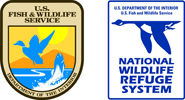Earth Science Week Classroom Activities
Looking for Wild Elements

Activity Source:
Fish & Wildlife Service. Adapted with permission.
For the Teacher: Few schools are within walking distance of a federally designated wilderness. However, many schools are within walking distance of land with wild elements.
Students can look for examples of places with wild elements on or near their school grounds. Then they can duplicate the activity in a wilder landscape, such as those found on national wildlife refuges.
In this activity, students will explore local places with wild elements, such as wildlife refuges. Students also will create maps showing spatial relationships between wild places and school, and they will find creative ways to record experiences.
Materials
- Clipboards
- Pencils (regular and colored) and paper
- Compass or GPS unit for each team (optional)
Procedure
For the students:
-
Discuss the term “wild.” A wild thing is something that thrives as it occurs, exists, or lives in a natural state without any interference from, help of, or need for humans. This may include native vegetation or wildlife that thrives without human intervention.
-
Discuss how some schools have wild corners or sections on the schoolyard. What are some other examples of wild places? Vacant lots or unmanaged portions of lots or yards? Orchards or pastures no longer actively used or managed? Unmaintained ditch banks along abandoned irrigation channels? Small unmanaged woodlots? Unpaved alleys? Areas adjacent to abandoned buildings?
-
Find a wild place outdoors. Remember, wild places do not exist only in large areas. Even small areas can fit the definition.
-
Join with a classmate or two to form a mapping team. Make sure that your team, like every other team, takes along the materials you need for the activity.
-
With paper on your clipboard, draw a map of your wild place. If necessary, ask your teacher for help in using a compass or GPS unit. Create a compass rose showing directions.
-
Back at school, create a new project team with students from other mapping teams. Try to show what you found out in different ways. For example, you might use posterboard or a large sheet of paper for an expanded map. Or you might make a drawing that shows the size of wild places compared to your school and where these wild places are.
-
As a project extension, you might ask a parent or guardian to help extend the mapping project in a more wild setting, such as a national wildlife refuge, and then compare and contrast the two products. Discuss the language used to describe to such places. How has your understanding changed regarding what is wild? Wilderness? Designated wilderness?
This activity was adapted from Wilderness Investigations , a toolkit of wilderness-related lessons and activities. Contact Steve Archaibald at the Arthur Carhart National Wilderness Training Center for more information (srarchibald@fs.fed.us or steve_archibald@fws.gov).
